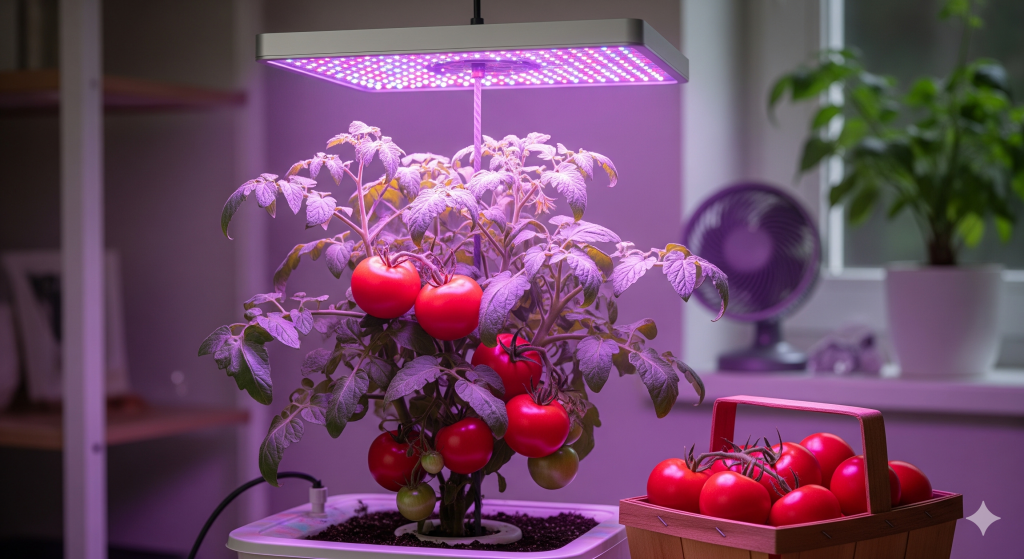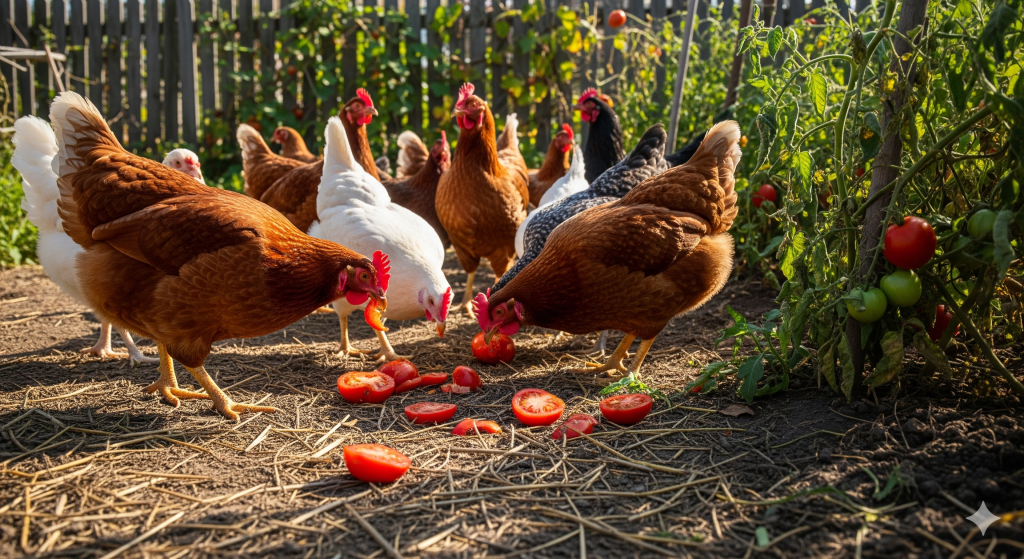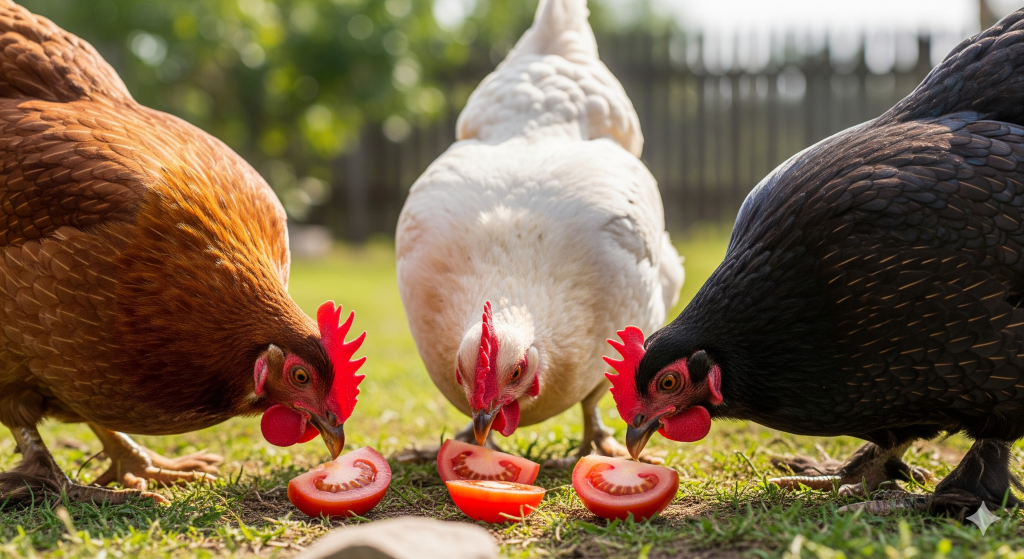Table of Contents
As the year-end monsoon season approaches in places like Malaysia, with its heavy rains and often overcast skies, many gardeners wonder if their sun-loving tomato plants can be saved from the deluge. This leads to a popular question for dedicated gardeners: how long can tomato plants survive winter indoors? The answer is a delightful surprise to many. Tomato plants are technically tender perennials, not annuals. This means that when protected from harsh environmental conditions, they can survive for several years, transforming from a single-season crop into a long-term houseplant.
Bringing a tomato plant indoors, a practice known as overwintering, allows you to bypass the limitations of your climate. In a tropical region, this isn’t about escaping frost, but rather about controlling moisture and light levels during the wettest parts of the year. With the right care, you can not only keep your favourite plant alive but also potentially enjoy a continued harvest of homegrown tomatoes.
How long will a tomato plant produce indoors?
While an overwintered tomato plant can live for several years (some gardeners report keeping them for up to five years), its fruit production will naturally ebb and flow. A plant brought indoors after a season of producing outdoors may enter a period of reduced productivity as it adjusts to different light levels.
However, if provided with adequate light and care, it can continue to produce fruit throughout the year. You can typically expect a smaller, but more consistent, harvest compared to the glut of an outdoor season. For the best results, it’s often easier to start a new, compact or dwarf variety indoors from seed, specifically for indoor production, rather than bringing in a large, mature plant from the garden. This allows you to manage its size from the beginning.
Ready to Take Your Self-Sufficiency to the Next Level?

If you love the self-sufficient lifestyle, this is the only guide you’ll ever need. Learn how to generate your own power, secure your water supply, and become truly independent. No fluff, just actionable plans.
➡️ Check out The Self-Sufficient Backyard and start your journey today!
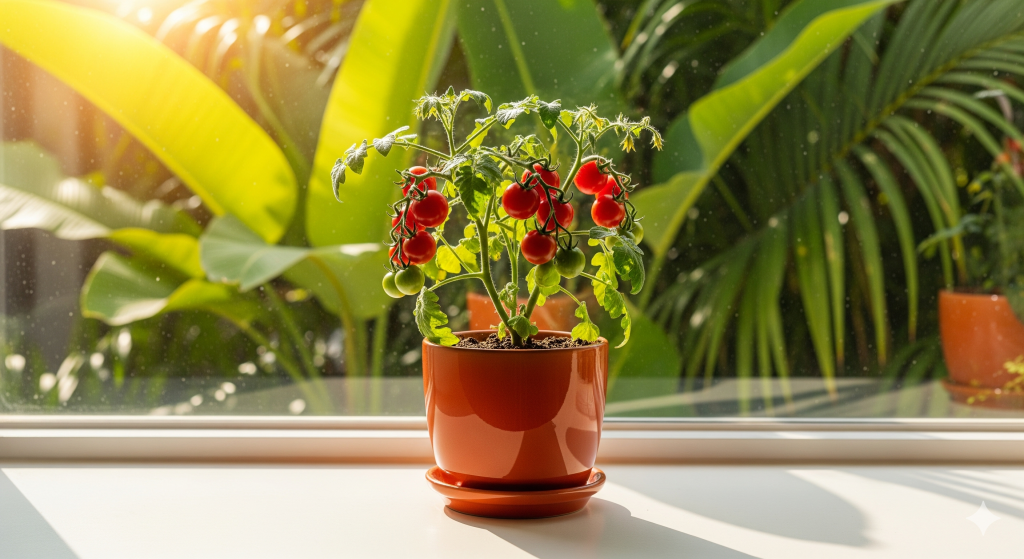
Growing tomatoes indoors on a windowsill
Growing tomatoes on a windowsill is a classic and charming way to keep the taste of fresh produce alive. It’s an accessible method for those without dedicated grow light setups, but success is highly dependent on the quality of light you can provide.
To be successful, you need an unobstructed window that receives a minimum of 6-8 hours of direct, bright sunlight per day. This can be the biggest challenge during the monsoon season when days can be consistently overcast. A window facing the morning sun is often best in a hot climate to avoid the harshest afternoon heat.
- Choose the Right Variety: Opt for micro-dwarf or determinate bush varieties that stay small and compact. Varieties like ‘Micro Tom’, ‘Tiny Tim’, or ‘Red Robin’ are specifically bred for container and windowsill gardening.
- Rotate Regularly: Turn the pot every few days to ensure all sides of the plant get equal sun exposure, preventing it from leaning too much in one direction.
- Manage Temperature & Airflow: Keep the plant in a spot with good air circulation to prevent fungal issues, which can be common in humid climates.
Even with the brightest window, you may find that growth is slower and the harvest is modest without supplemental lighting.
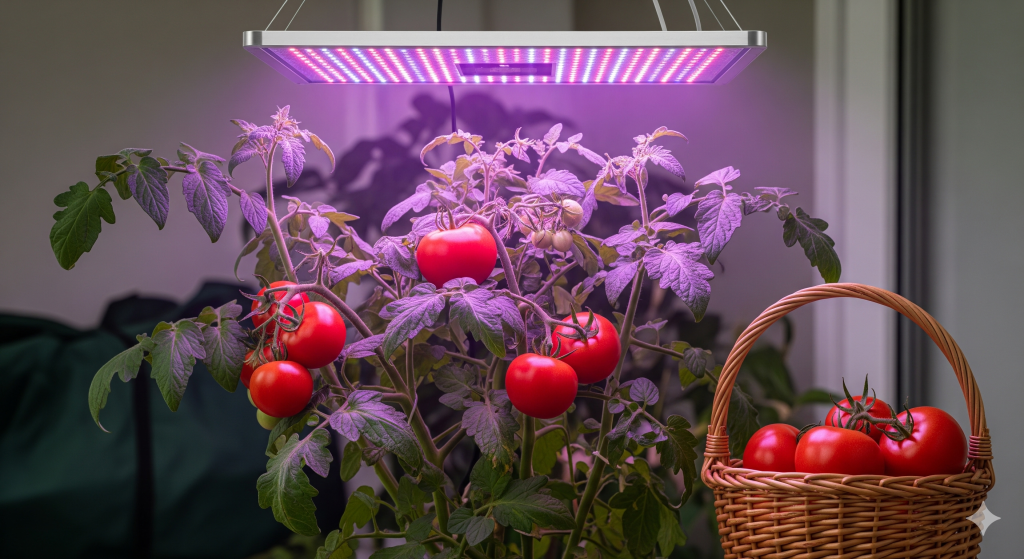
Can you grow tomatoes indoors with grow lights?
For gardeners who are serious about getting a substantial indoor harvest, or for those who lack a sufficiently sunny window, grow lights are a game-changer. Using grow lights is the most reliable way to provide your tomato plants with the full spectrum of light they need to not just survive, but to actively thrive and produce fruit indoors.
This method removes the dependency on unpredictable weather or the position of your windows, giving you complete control over the plant’s environment.
- Type of Lights: Full-spectrum LED grow lights are the most popular and energy-efficient option for home growers. They provide all the wavelengths of light that plants need for both vegetative growth and flowering/fruiting.
- Duration and Proximity: Tomato plants need a lot of light. You should run your grow lights for 14-16 hours per day. The lights should be positioned just a few inches above the top of the plants and raised as the plants grow taller.
- Pollination: Indoor plants don’t have wind or bees to help with pollination. Since tomato flowers are self-pollinating, you’ll need to gently shake the plants daily or use a small fan to help distribute the pollen within the flowers.
Conclusion
The notion that tomato plants are a single-season crop is a misconception born from climate limitations. In reality, these plants are perennials capable of living for several years when brought indoors and protected from harsh conditions. Whether you are saving a cherished plant from the monsoon rains in Malaysia or from a killing frost in a temperate region, overwintering is a viable and rewarding practice.
Success hinges on providing the one crucial element that is often scarce indoors: light. While a sunny windowsill can sustain a compact plant, using a dedicated grow light system is the most effective way to ensure not just survival, but continued fruit production. By managing light, water, and pests, you can transform your tomato plant into a year-round houseguest, enjoying the unparalleled taste of homegrown tomatoes long after the outdoor season has ended.

